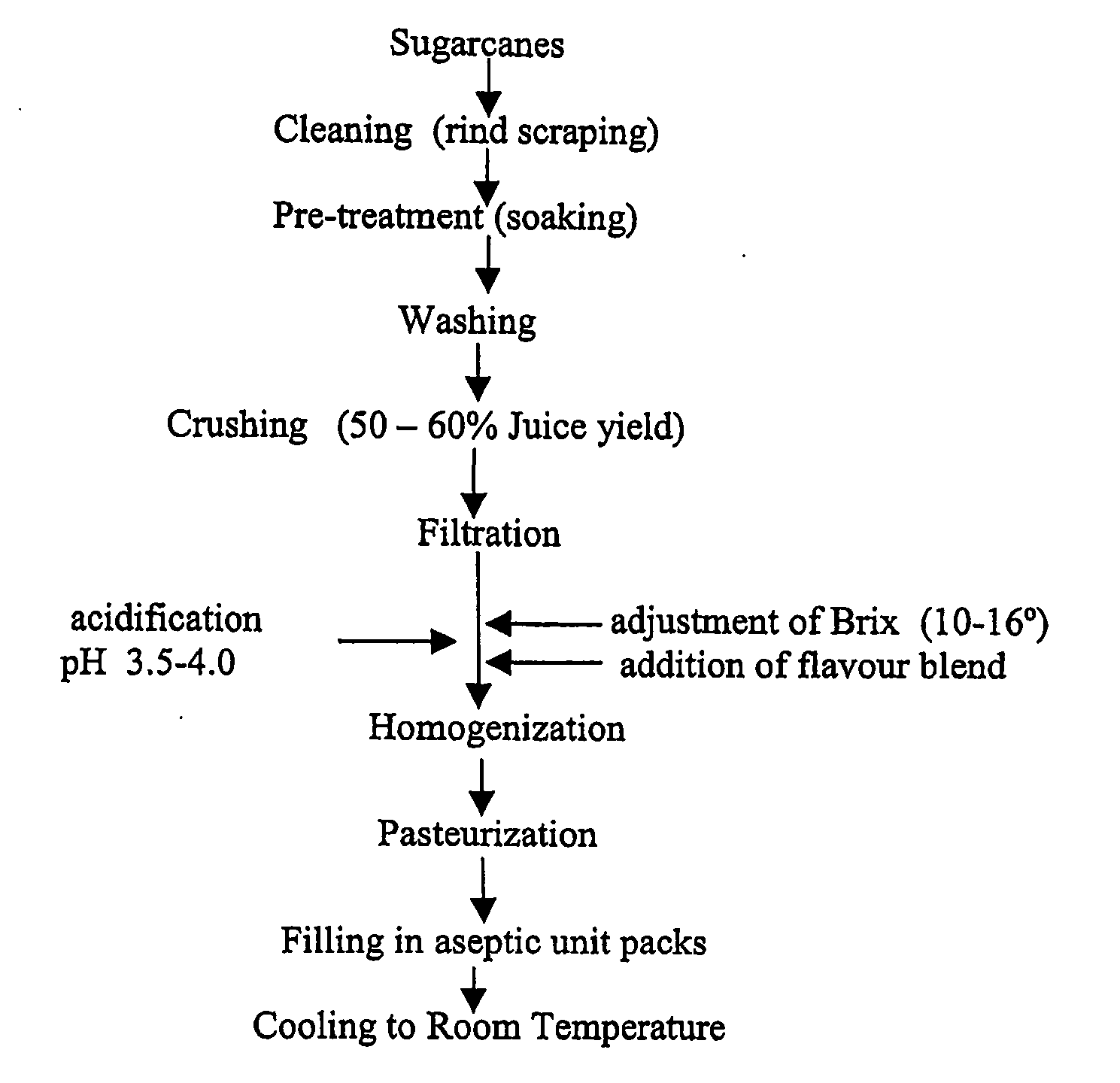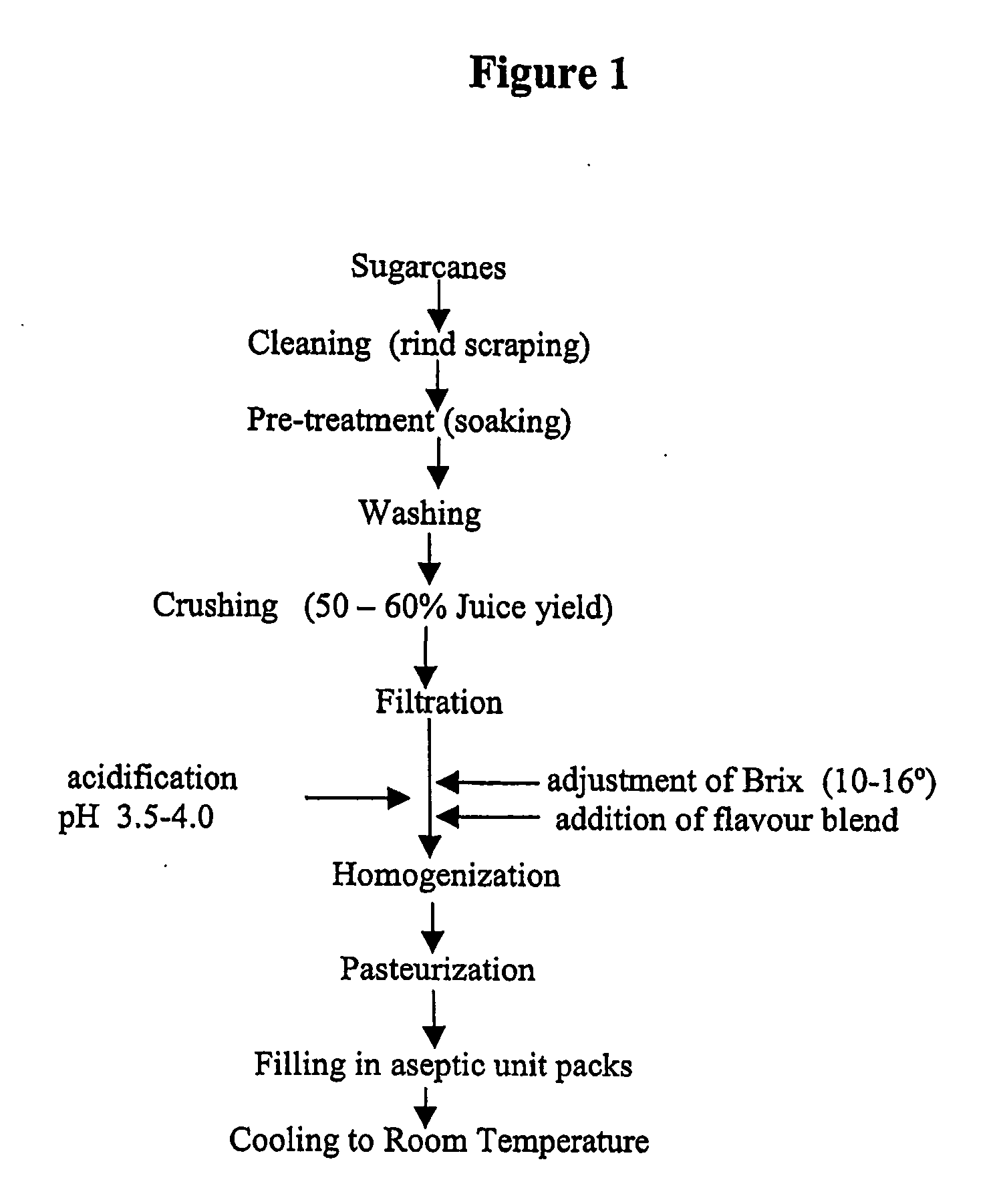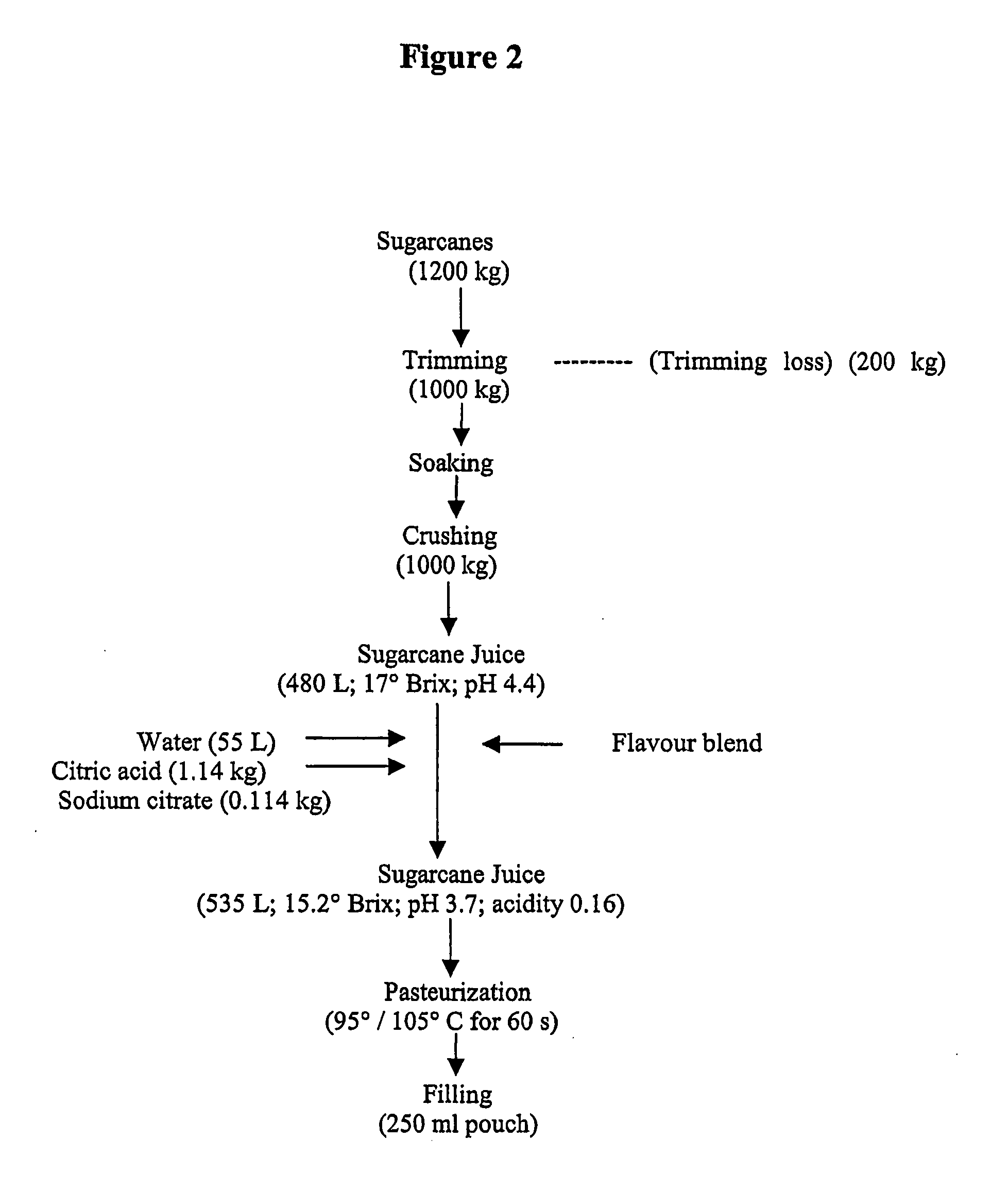Flavored sugarcane juice in aseptic unit packs
a technology of aseptic unit packs and sugarcane, which is applied in the direction of sugarcane juice extraction, food ingredients for microorganism protection, food ingredients, etc., can solve the problems of food handlers contaminating raw juice with heavy load of microorganisms, yeast growth, and contamination of raw juice by these bacteria
- Summary
- Abstract
- Description
- Claims
- Application Information
AI Technical Summary
Benefits of technology
Problems solved by technology
Method used
Image
Examples
example 1
[0032] Sugarcanes (1.2 tons) were procured, roots and stems trimmed to obtain 1 ton of cleaned canes. These were soaked in KMS solution for 2 hours. Then the canes were thoroughly washed and juice extracted using the twin roller crusher with SS rollers. 500 L of juice (20° Brix) was obtained and collected in a chiller tank with re-circulation facility, maintained at 4° C. The brix was brought down to 15.4 by adding soft water (150 L). The product was thawed, pH adjusted to 3.70 by adding citric acid (0.2%) and sodium citrate (0.02%). The total quantity of juice was 650 L. After pH and brix adjustment, the juice was pumped to homogenizer at 140 bar and subsequently to sterilizer to pasteurize at 95° C. for 60 s. Pasteurized juice was stored in an aseptic tank with steam locks. Meanwhile, the filling section of the processor was sterilized with superheated water. Subsequently, the juice was filled into 250 ml aseptic unit packs.
example 2
[0033] Sugarcanes (1.4 tons) were thoroughly cleaned to remove the waxy layer by scraping the rind. The final weight of the cleaned canes were 1050 kg and were soaked in KMS solution for 4 h. The canes were washed with running water and crushed to obtain 510 liters of juice (200 Brix). The juice was diluted to 15.2° Brix by adding soft water (160 L). Citric acid (0.2%), sodium citrate (0.02%) and flavor blend (500 ml) consisting of ginger oleoresin (70 g) duly emulsified in propylene glycol were added. The juice was pumped to homogenizer at 140 bars through de-aerator and subsequently to sterilizer and pasteurized at 105° C. for 60 s. Subsequently, the juice was filled into 250 ml aseptic unit packs.
example 3
[0034] 1.2 tons of canes. were procured, roots and stem were trimmed. The sugarcanes were thoroughly cleaned to remove the waxy layer by scraping the rind. The cleaned canes were soaked in KMS solution for 4 h. The canes were washed with running water, crushed to obtain about 480 liters of juice (17° Brix) followed by dilution with soft water (55 L) to adjust the brix to 15.2°. Citric acid and sodium citrate at the levels of 0.2 and 0.02% respectively and a flavor blend (500 ml) consisting of ginger oleoresin (70 g) and terpeneless lime and lemon oil (7.5 ml each) duly emulsified in propylene glycol was added to the juice and pumped to the homogenizer at 140 bars through de-aerator and subsequently to sterilizer for pasteurization at 95° C. for 60 s. Subsequently, the juice was filled into 250 ml aseptic unit packs. The material balance for example 3 is shown in FIG. 2.
PUM
 Login to View More
Login to View More Abstract
Description
Claims
Application Information
 Login to View More
Login to View More - R&D
- Intellectual Property
- Life Sciences
- Materials
- Tech Scout
- Unparalleled Data Quality
- Higher Quality Content
- 60% Fewer Hallucinations
Browse by: Latest US Patents, China's latest patents, Technical Efficacy Thesaurus, Application Domain, Technology Topic, Popular Technical Reports.
© 2025 PatSnap. All rights reserved.Legal|Privacy policy|Modern Slavery Act Transparency Statement|Sitemap|About US| Contact US: help@patsnap.com



